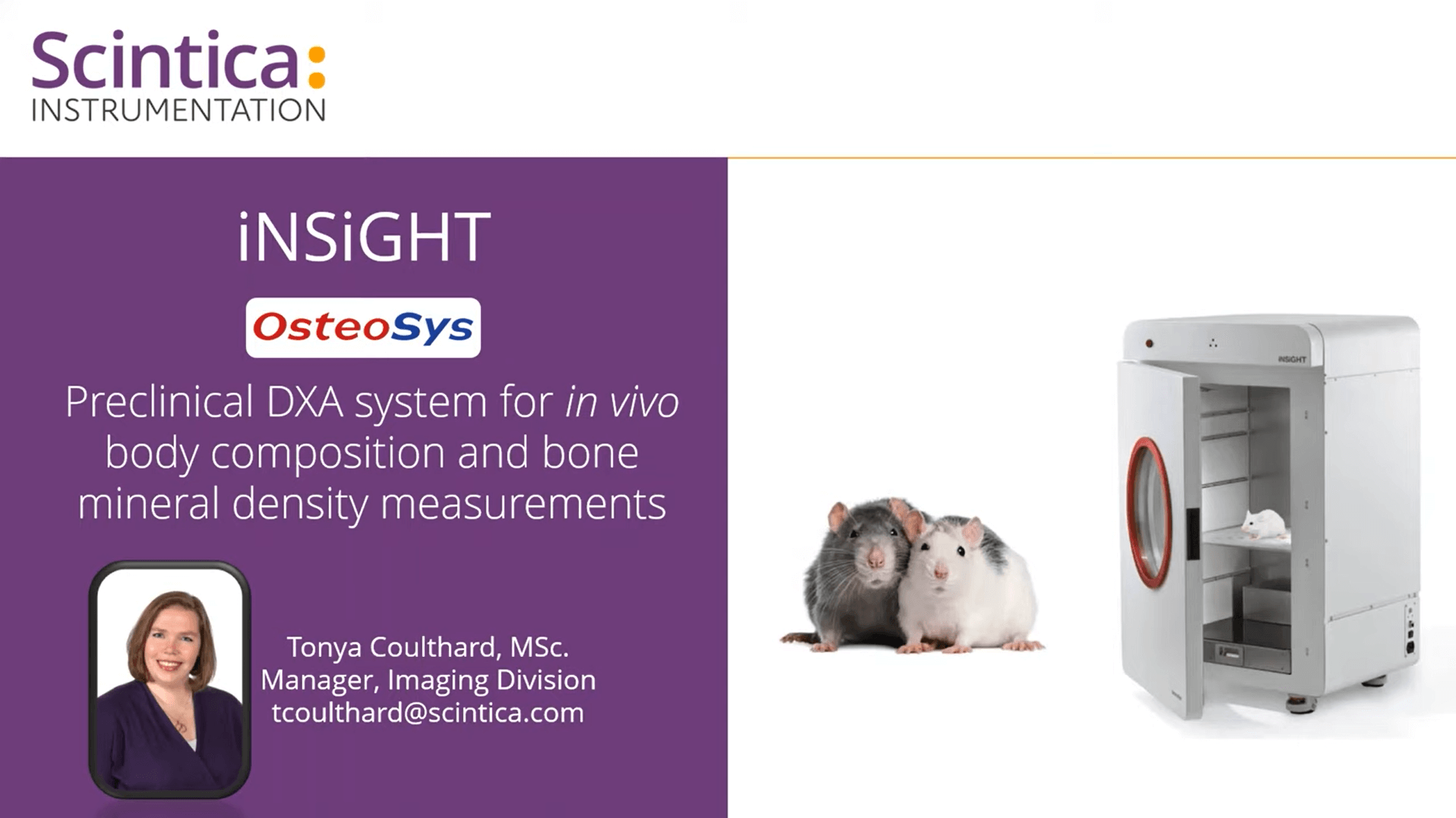(February 2, 2021) WEBINAR: Preclinical DXA for in vivo body composition and bone mineral density measurements
Overview:
Topics discussed in this webinar included:
- What is DXA and How Does it Work
- iNSiGHT System & Software Overview
- Key Research Applications:
- Metabolic Bone Disease
- Arthritis
- Metabolic Disorders
- Musculoskeletal Diseases
- Drug Safety and Toxicology
This webinar introduced the iNSiGHT preclinical DXA system from OsteoSys. The system is considered one of the best-in-class, preclinical DXA systems.
The system is a fully shielded DXA (DEXA, dual-energy x-ray absorptiometry) system, designed specifically for preclinical small animal models.
The DXA technology provides quantification of body composition, such as bone mineral density (BMD), and measures of lean and fat mass.
About OsteoSys
Osteosys has been providing clinical body composition analyzers for over 20 years, with around 20,000 systems installed world-wide. With a strong background in research and development, Osteosys took their experience with clinical DXA technology and created the iNSiGHT system, providing researchers with a state-of-the-art tool to study body composition non-invasively, with low dose radiation, suitable for longitudinal studies.

About the Speaker (s)

Tonya Coulthard, MSc
Manager, Imaging Division, Scintica
Tonya Coulthard holds an MSc from the University of British Columbia in Experimental Medicine. Throughout her academic training she focused on a variety of diseases ranging from prions to chronic obstructive pulmonary disorder. In her professional career she has worked with several imaging and medical device companies; in these roles she has interacted with researchers around the world covering a very diverse range of research applications. In her present role at Scintica Instrumentation Tonya manages our Imaging Division; in this role she works in supporting our customers in understanding the products offered and how these instruments help to meet their research needs